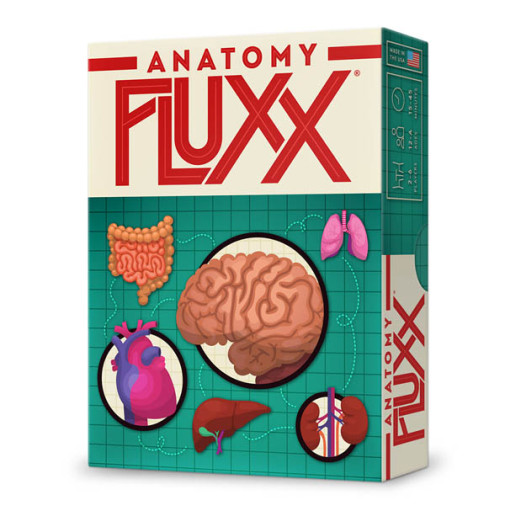We use cookies to make your experience better. To comply with the new e-Privacy directive, we need to ask for your consent to set the cookies. Learn more.
Anatomy Fluxx Game
Another Fluxx game version with great educational value? You must be kidney! The Keeper cards in this game, all organs and other body parts, each have a factlet at the bottom that talks about how that body part functions or contributes to keeping the amazing human body healthy. To add even more learning fun, there are special new rules such as “Name that Organ" and “Alternate Factlets" that ask players to label an organ based on the factlet that another player provides, or to try to give a fact of their own about a body part. There are silly body-themed rules too, such as requiring that players create the rhythm of a beating heart. Goals in this game are all about creating body systems or conditions, such as putting the heart and blood vessels together to make the Circulatory System, or the Pituitary Gland and Bone together to make Gigantism. But there's also plenty of bad blood in this game to keep it interesting - Creeper cards like Virus can attach to Keeper cards to prevent players from completing Goals, and if there are “Ungoal" cards in play, they can make EVERYONE lose! One example is the “Cancer" ungoal, which can cause massive game loss if any one player has both the lung/prostate and mutation cards. There are even some sneaky action cards like “It's Contagious!" that allow players to rid themselves of creeper cards by “infecting" adjacent players. Simple rules ensure there's not much ex-spleening to do, and a 30-minute max game time means it doesn't take long to play, either! Whether you're a teacher, student, or just an anatomy buff, we're sure you'll find this version humerus! Note: game does include purely anatomical illustrated depictions and explanations of both male and female reproductive organs. ~ Janine
Anatomy Fluxx is the newest addition to our education line and takes you deep into the human body. From Bones to Blood Vessels, Anatomy Fluxx is packed with all the body bits that keep you ticking. But be on the lookout for Virus, Mutation, and Bacteria Creepers! Plus, two Learning Rules will get your Brain in gear with anatomical trivia. Anatomy Fluxx - for external use only!


It has good information concerning the human anatomy that I felt would be good to review with my kids
I purchased this game to coincide with my 8th grader's biology and health class! Fluxx is such a fun and fast-paced game that leads to great conversations!
Game for anatomy class
We are studying Anatomy and we have really enjoyed the other Fluxx games